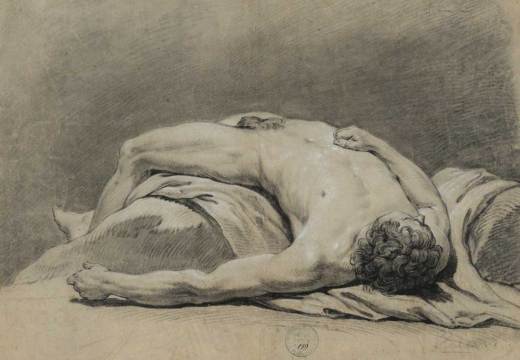Although French interest in Turquerie dates back to the 16th century with the increase of mercantile and political relations after the Franco-Ottoman alliance of 1536, British Orientalism brings to mind both a later period and often more distinctly Middle Eastern or Arab-African locations and subjects – English painter John Frederick Lewis’s Cairo scenes, perhaps, or Scottish landscape artist David Roberts’ Syria and Palestine. James Robertson’s 19th-century photographs of the Ottoman capital betray a documentary, preservationist impulse: they present a different world to the lounging odalisques and decorated harems of French painters such as Jean-Léon Gérôme and Eugène Delacroix. The photographer and engraver looked on Constantinople with the eye of a veteran expatriate.

Istanbul Panorama Taken from the Beyazit Tower (1854), James Robertson. Robertson is the first Istanbul photographer known to have taken 360° panoramic photographs of the city. The first panorama, which was taken in May 1854 from the Tower of the War Ministry in Beyazit, consists of 12 separate photographs. Ömer M. Koç Collection
Hosted by Koç University’s Research Centre for Anatolian Civilisations, Istanbul, in commemoration of his 200th birthday, ‘Robertson: Photographer and Engraver in the Ottoman Capital’ showcases both Robertson’s photography and his four decades of work (spanning the reigns of four Sultans), as chief engraver for the Ottoman Imperial Mint.
After completing his vocational training at the London Royal Mint, Robertson arrived in Istanbul in 1841 to implement banknote and coinage reforms at the behest of the progressive Sultan Abdülmecid I. 10 years on, he had a set up a small photography studio in Pera, Constantinople’s historic Levantine district, turning his hobby into a business with his brother-in-law, Felice Beato.
Over the next decade, Robertson & Beato Photography captured an array of Ottoman mosques, fountains, city walls and the multicultural architectural heritage of this imperial capital. In what can surely be described as nothing less than one of the earliest photojournalistic endeavours, they produced detailed shots of architecturally and historically significant locations in Greece, Malta, Palestine, Syria, and Egypt. Widely thought to be one of the first war photographers, Robertson even traveled to Crimea to photograph the fall of Sevastopol in 1855, and further east to document the aftermath of the 1857 Indian Rebellion.
In tone, research and curation, the exhibition presents a rather museum-like, academic display of spot-lit sepia photos, minted coins in glass cases, bilingual biographical timelines and dusty Victorian tomes featuring Robertson’s photos. Unsurprising, perhaps, for a university-curated exhibition featuring loaned originals from the private collections of the Koç family, yet the works themselves possess a vitality and immediacy that could have handled more imaginative presentation. The series featuring Robertson’s watercolour observations of people in typical Ottoman professions, for instance, have an intimate rather than academic touch: his subjects are friendly and relaxed in the presence of this ‘local’ foreigner.
His photography is by no means pedantic: naturalistically featuring people going about their daily lives with no thought to the alien apparatus capturing their image, they depict a living, breathing city even as they lay claim to no more than historical documentation. Indeed, to a contemporary Istanbulite, Robertson’s shot of the pretzel-sellers milling about in the shadow of Galata Tower is nothing short of a jolt of the uncanny – the familiarly quotidian sight revealing itself to have been a ghost from the past all along.
Pride of place is given to Robertson’s 1854 panoramic shot of Istanbul. Displayed in a lightbox that accentuates the perfect exposure and detailed foci of the 12 separate photographs that comprise the final piece, it depicts both the ancient peninsula and the adjacent shore as seen from the Tower of Beyazid. This and his other images of Istanbul went on to garner much acclaim in London and Paris, allegedly even earning their place among the first photographs purchased by Prince Albert for the Royal Collection. Although hardly akin to the imaginative Orientalist depictions common in Europe at the time, the sense of tangible reality in Robertson’s work clearly satisfied a growing taste for the authentic over the increasingly outmoded thrills of exotic depiction.
He himself, however, seemingly allowed his photographic career to fade: records show he abandoned the medium after selling his Constantinople studio in 1867. Immigrating to Japan in 1882, he shouldered the debts of Beato’s ailing business in Yokohama, remaining there until his death in 1888. Perhaps it was always a ‘side’ venture, or a technology still too uncertain to invest in; as it stands, history once again chose to shape a reputation posthumously. In restoring Robertson to his city, this exhibition acquaints him with his new audience.
‘Robertson: Photographer and Engraver in the Ottoman Capital’ is at the Koç University’s Research Centre for Anatolian Civilisations, İstanbul, until 20 February 2014.
















![Masterpiece [Re]discovery 2022. Photo: Ben Fisher Photography, courtesy of Masterpiece London](http://zephr.apollo-magazine.com/wp-content/uploads/2022/07/MPL2022_4263.jpg)
Suzanne Valadon’s shifting gaze